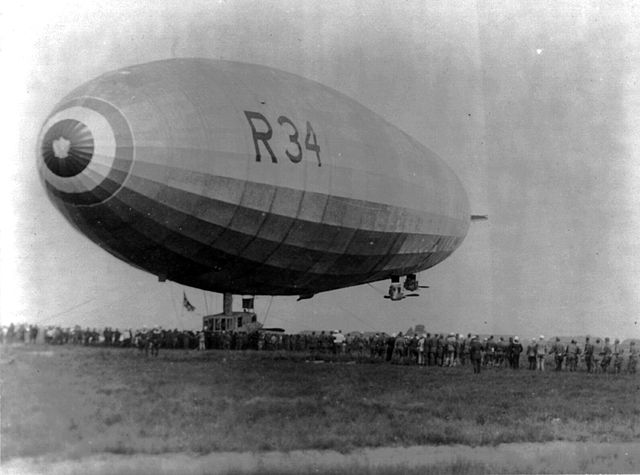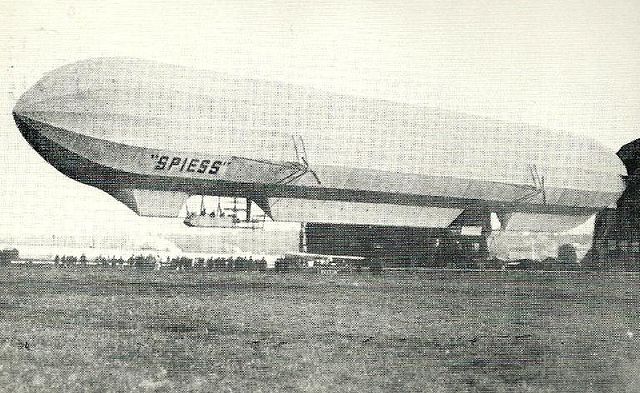The R.33 class of British rigid airships were built for the Royal Naval Air Service during the First World War, but were not completed until after the end of hostilities, by which time the RNAS had become part of the Royal Air Force. The lead ship, R.33, served successfully for ten years and survived one of the most alarming and heroic incidents in airship history when she was torn from her mooring mast in a gale. She was called a "Pulham Pig" by the locals, as the blimps based there had been, and is immortalised in the village sign for Pulham St Mary. The only other airship in the class, R.34, became the first aircraft to make an east to west transatlantic flight in July 1919 and, with the return flight, made the first two-way crossing. It was decommissioned two years later, after being damaged during a storm. The crew nicknamed her "Tiny".
R33-class airship
The pair of Gloster Grebes under the airship before the test, 26 October 1926
R33 near its hangar
The forward section of R.33 control car at RAF Museum (Hendon), 2008
A rigid airship is a type of airship in which the envelope is supported by an internal framework rather than by being kept in shape by the pressure of the lifting gas within the envelope, as in blimps and semi-rigid airships. Rigid airships are often commonly called Zeppelins, though this technically refers only to airships built by the Luftschiffbau Zeppelin company.
Construction of USS Shenandoah (ZR-1), 1923, showing the framework of a rigid airship
LZ 1, the first successful rigid airship
The extended Spiess airship in 1913
The British R34 in Long Island during the first ever return crossing of the Atlantic in July 1919







